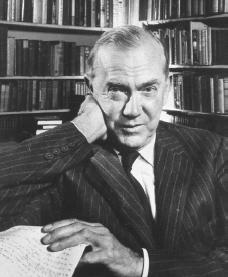William Goldman, author, screenwriter after the 25th anniversary showing of The Princess Bride
Cary Elwes, who stars as Westley in The Princess Bride and wrote his best-selling memoir about the experience, As You Wish, says William Goldman, who wrote the screenplay based on his book, had not seen the movie with an audience since its 1987 premiere in Toronto until 25 years later when Goldman, director Rob Reiner and several cast members gathered for the 25th anniversary celebration of the film. What struck Goldman, Elwes writes, is that so many members of the audience said the lines right along with the actors in the movie. "They knew every line," he said.
That so many people do know lines from The Princess Bride speaks both to the popularity of the movie (watch a movie often enough and you begin to learn the lines) and to the brilliance of Goldman's writing (not to mention the brilliance of Billy Crystal's ad libs, many of which made it into the film.
There have been lines from many movies that have become widely known, even by some who have never even seen the movies. The Wizard of Oz, Gone With the Wind, The Godfather and The Big Lebowski, among many others, have given us lines that have become part of the culture. Until The Princess Bride came along, Casablanca may have been the champ, bestowing upon us such lines as "We'll always have Paris" and "Round up the usual suspects."
Elwes provides us with a long list of memorable lines from the Reiner film that fans love to repeat. Some of these include:
"Hello. My name is Inigo Montoya. You killed my father. Prepare to die."
"Inconceivable."
"Anybody want a peanut?"
"Have fun storming the castle."
"Never get involved in a land war in Asia."
"Rest well, and dream of large women."
"Please consider me as an alternative to suicide."
"This is true love. You think this happens every day?"
"Mawidge. That bwessed awangement!"
"Never go in against a Sicilian when death is on the line!"
"There's a shortage of perfect breasts in this world. It would be a pity to damage yours."
"As you wish."
His list doesn't even include "mostly dead," a favorite of mine.
Even the names of characters and places in the movie are memorable: Princess Buttercup, Dred Pirate Roberts, Prince Humperdinck, Miracle Max, the Cliffs of Insanity, the Pit of Despair, the Fire Swamp and so on.
Certain fairy tales have become part of our culture and provide handy metaphors for all sorts of situations. There is Cinderella and her glass slippers, Snow White and the seven dwarfs, Goldilocks and the three bears and so on. The Princess Bride, a modern fairy tale, fits right in with those older tales. It, too, will be remembered for a long, long time.









